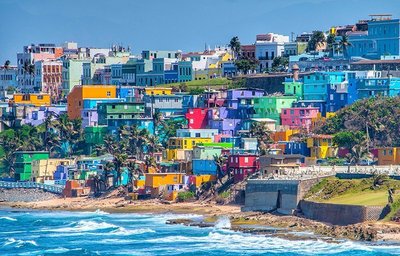Hurricane Maria’s Effects on Puerto Rico’s Human Capital and Economy: a Case Study on Natural Disasters in a Changing Climate
- Student
- Eliot Evans
- College(s)
- College of Arts and Letters
- Faculty Advisor
- Timothy Dunne
- Class Year
- 2021

On September 20, 2017, Hurricane Maria made landfall in southeastern Puerto Rico as a Category 5 superstorm. The island of just over 3 million, an unincorporated United States territory, was woefully unprepared for the natural disaster and suffered drastic consequences. With nearly 3,000 lives lost and more than $40 billion lost, it is no surprise that the impacts of Maria are still felt in Puerto Rico today.
Recovery efforts have been incomplete at their best and utterly incompetent at their worst, and the island remains in a vulnerable position going forward. As climate change weakens the natural stability of the region and increases the likelihood of more frequent and intense natural disasters, Puerto Rico stands at a critical inflection point if it is to take action to adapt to the environmental threats it faces.
Although previous studies have weighed potential costs of a rising frequency of natural disasters and provided analyses of the resulting economic losses, this study investigates Puerto Rico’s unique political and environmental status as a case study of the impacts of natural disasters on human capital and the overall economy of the territory. Political status plays a prominent role in my analysis as the territory’s relationship with the United States makes a critical difference in its path to recovery and adaptation to a changing climate. This study concludes that the most pressing issues in disaster response are those that existed prior to the hurricane, as Puerto Rico’s economy showed resilience to the shock in both its labor market and production numbers with help from aid from the U.S. federal government.